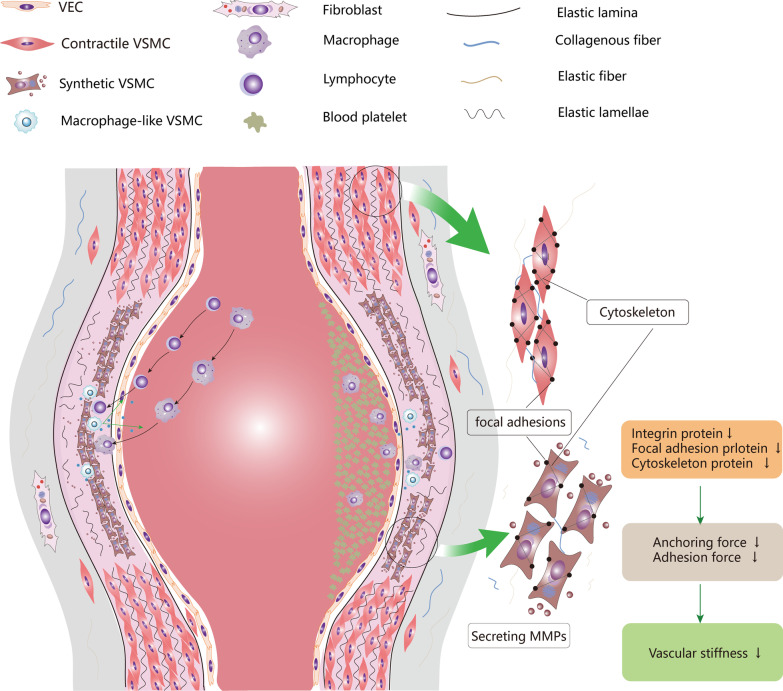Fig. 4.
VSMCs phenotype and aortic aneurysm. The aortic wall comprises tunica intima, tunica media, and tunica adventitia. Tunica intima consists of a single layer of endothelial cells and basement membrane. Tunica intima and tunica media are separated by internal elastic lamina. Tunica media is composed of multilayer annular elastic lamellae and annular arranged VSMCs and is filled with collagen-rich and elastin-rich ECM. The tunica adventitia is composed of collagen, elastic fiber, and fibroblast, separated from the tunica media by the external elastic lamina. VSMCs and elastic fibers in tunica media provide active and passive contractility respectively. In aortic aneurysm, VSMCs switch to synthetic phenotype, down-regulate contractile protein, and secret massive MMPs and inflammatory cytokines. Down-regulated contractile proteins mean that the aorta cannot provide enough contractile force to restore its original diameter during pulse pumping. Moreover, the abundant collagen and Elastin in the aortic ECM were decomposed into fragments by MMPs, resulting in disrupted elastic lamina and elastic lamellae. Therefore, the aorta does not generate sufficient passive contractile force in dilated condition. As synthetic VSMCs express less integrin protein, focal adhesion protein, cytoskeleton protein, the anchoring force between VSMCs and ECM decreases, resulting in weaker passive contraction force. Macrophage-like VSMCs, on the other hand, secrete inflammatory factors and chemokines, recruit monocytes, macrophages, and lymphocytes to infiltrate into the aortic wall. These cells form chronic inflammation and participate in the destruction of aortic wall. VEC, vascular endothelial cell; VEC, vascular endothelial cell; MMPs, metalloproteases; ECM, extracellular matrix

